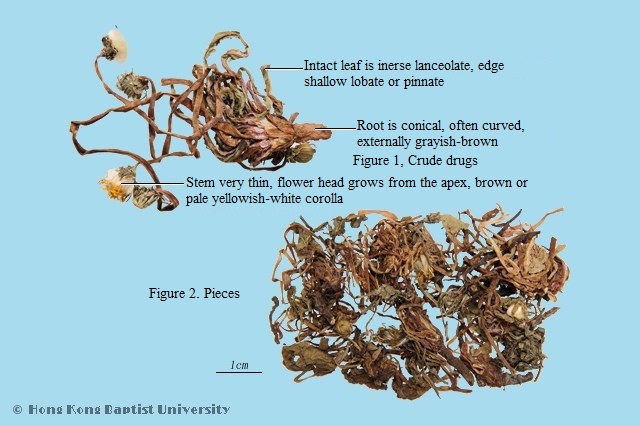Production RegionsPrimarily produced in the Chinese provinces of Shaanxi, Hebei and northeastern areas.
Macroscopic FeaturesWrinkled lumps, root is cylindrical, often curled, 3~7cm long, brown, root head has hairs, leaves are broken, intact leaf is inverse lanceolate, dark grayish-green or greenish-brown, edge is shallow cracked or with pinnate incision, base is downy and stem-like, lower surface has obvious main veins, one or more scales, flower head grows from the apex, yellowish-brown or pale yellowish-white, sometimes with numerous obvious long elliptical achenes with white hairs. faint odor, slightly bitter taste.
Quality RequirementsSuperior medicinal material is grayish-green, without foreign matter, and dry.
PropertiesSweet, slightly bitter, cold
FunctionsClears heat, resolves toxin, resolves swelling, eliminates binds. Apply to upper respiratory tract infection, conjunctivitis, mumps, hyperglycemia, acute mastitis and swelling pain, gastritis, diarrhea, hepatitis, cholecystitis, acute appendicitis, urinary tract infections, pelvic inflammatory disease, abscess, boils, furuncle, sore, pharyngitis, acute mastitis, lymphadenitis, scrofula, furuncle toxin and swelling sore, acute conjunctivitis, cold fever, acute tonsillitis, acute bronchitis, urinary tract infection.
OriginThe dried whole herb of Taraxacum mongolicum Hand.-Mazz.(Asteraceae)
